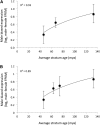Trade-off between selection for dosage compensation and masculinization on the avian Z chromosome
- PMID: 22997237
- PMCID: PMC3512148
- DOI: 10.1534/genetics.112.145102
Trade-off between selection for dosage compensation and masculinization on the avian Z chromosome
Abstract
Following the suppression of recombination, gene expression levels decline on the sex-limited chromosome, and this can lead to selection for dosage compensation in the heterogametic sex to rebalance average expression from the X or Z chromosome with average autosomal expression. At the same time, due to their unequal pattern of inheritance in males and females, the sex chromosomes are subject to unbalanced sex-specific selection, which contributes to a nonrandom distribution of sex-biased genes compared to the remainder of the genome. These two forces act against each other, and the relative importance of each is currently unclear. The Gallus gallus Z chromosome provides a useful opportunity to study the importance and trade-offs between sex-specific selection and dosage compensation in shaping the evolution of the genome as it shows incomplete dosage compensation and is also present twice as often in males than females, and therefore predicted to be enriched for male-biased genes. Here, we refine our understanding of the evolution of the avian Z chromosome, and show that multiple strata formed across the chromosome over ∼130 million years. We then use this evolutionary history to examine the relative strength of selection for sex chromosome dosage compensation vs. the cumulative effects of masculinizing selection on gene expression. We find that male-biased expression increases over time, indicating that selection for dosage compensation is relatively less important than masculinizing selection in shaping Z chromosome gene expression.
Figures



Similar articles
-
Transcriptome sequencing reveals the character of incomplete dosage compensation across multiple tissues in flycatchers.Genome Biol Evol. 2013;5(8):1555-66. doi: 10.1093/gbe/evt114. Genome Biol Evol. 2013. PMID: 23925789 Free PMC article.
-
Evolution of dosage compensation under sexual selection differs between X and Z chromosomes.Nat Commun. 2015 Jul 27;6:7720. doi: 10.1038/ncomms8720. Nat Commun. 2015. PMID: 26212613 Free PMC article.
-
Temporal genomic evolution of bird sex chromosomes.BMC Evol Biol. 2014 Dec 12;14:250. doi: 10.1186/s12862-014-0250-8. BMC Evol Biol. 2014. PMID: 25527260 Free PMC article.
-
A bird's-eye view of sex chromosome dosage compensation.Annu Rev Genomics Hum Genet. 2008;9:109-27. doi: 10.1146/annurev.genom.9.081307.164220. Annu Rev Genomics Hum Genet. 2008. PMID: 18489256 Review.
-
Sex chromosome dosage compensation: definitely not for everyone.Trends Genet. 2013 Dec;29(12):677-83. doi: 10.1016/j.tig.2013.07.005. Epub 2013 Aug 14. Trends Genet. 2013. PMID: 23953923 Review.
Cited by
-
Conservation of Regional Variation in Sex-Specific Sex Chromosome Regulation.Genetics. 2015 Oct;201(2):587-98. doi: 10.1534/genetics.115.179234. Epub 2015 Aug 5. Genetics. 2015. PMID: 26245831 Free PMC article.
-
Transcriptomic and Epigenetic Preservation of Genetic Sex Identity in Estrogen-feminized Male Chicken Embryonic Gonads.Endocrinology. 2021 Jan 1;162(1):bqaa208. doi: 10.1210/endocr/bqaa208. Endocrinology. 2021. PMID: 33170207 Free PMC article.
-
Complete Dosage Compensation in Anopheles stephensi and the Evolution of Sex-Biased Genes in Mosquitoes.Genome Biol Evol. 2015 Jun 15;7(7):1914-24. doi: 10.1093/gbe/evv115. Genome Biol Evol. 2015. PMID: 26078263 Free PMC article.
-
Masculinization of gene expression is associated with exaggeration of male sexual dimorphism.PLoS Genet. 2013;9(8):e1003697. doi: 10.1371/journal.pgen.1003697. Epub 2013 Aug 15. PLoS Genet. 2013. PMID: 23966876 Free PMC article.
-
Highly Conservative Pattern of Sex Chromosome Synapsis and Recombination in Neognathae Birds.Genes (Basel). 2021 Aug 29;12(9):1358. doi: 10.3390/genes12091358. Genes (Basel). 2021. PMID: 34573341 Free PMC article.
References
-
- Albert A. Y. K., Otto S. P., 2005. Sexual selection can resolve sex-linked sexual antagonism. Science 310: 119–121 - PubMed
-
- Arnqvist G., Rowe L., 2005. Sexual Conflict. Princeton University Press, Princeton, NJ
-
- Axelsson E., Smith N. G. C., Sundström H., Berlin S., Ellegren H., 2004. Male-biased mutation rate and divergence in autosomal, Z-Linked and W-Linked introns of chicken and turkey. Mol. Biol. Evol. 21: 1538–1547 - PubMed
Publication types
MeSH terms
Grants and funding
LinkOut - more resources
Full Text Sources

